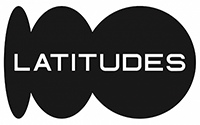Deepest Darkest presents Eucatastrophe
Similar can be said for embroidery, especially the subject matter of a ‘genteel’ woman's embroidery during the eighteen and nineteenth centuries was as important as its execution in affirming her femininity (and thus her worth and worthlessness in the world's eyes). And what better way to advertise this achievement (besides announcing it in a newspaper) than hosting a grand affair centered on the woman who has fulfilled her dreams? I am drawn to this idea of most fairy tales culminate in a wedding, usually that of a woman who elevates her status in the world by getting hitched.
Read More
There are currently no artworks by this artist available on Latitudes. Please contact info@latitudes.online if you would like us to source works.






